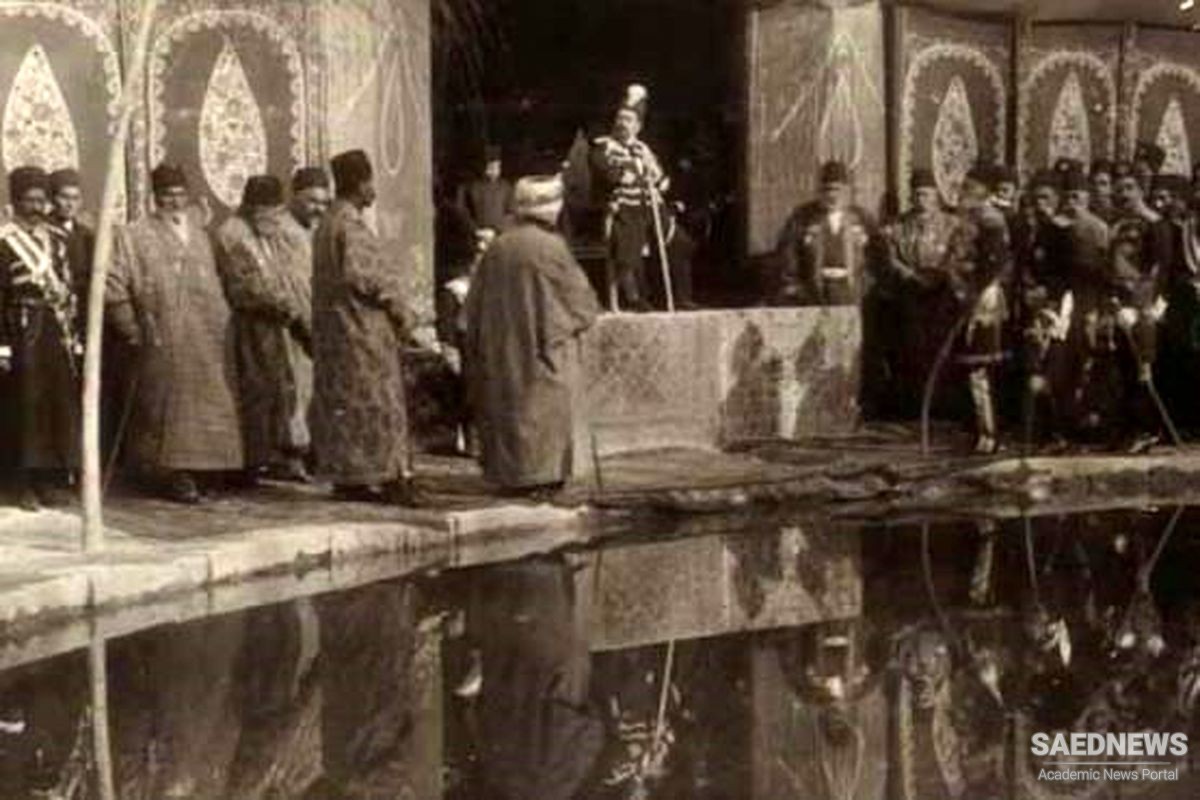The failed assassination, apparently masterminded by Haydar Khan and carried out by Azarbaijani émigrés from Baku, made the shah even less secure about his survival on the throne. His suspicions were aggravated as rumors circulated in Tehran of the candidacy to the throne of his uncle, Prince Zell al-Soltan, whose raw ambitions for the Qajar throne were long the subject of popular speculation. It was starkly clear that the Qajar nobility, afraid for their own survival, were no longer unanimously behind the shah. As early as mid-1907 radical constitutionalists, especially in Tabriz, called on the Majles and the public to remove Mohammad ‘Ali Shah from power. The revolutionary newspapers and preachers were no less shy. By early 1908, it appeared that an armed confrontation between the parties was inevitable.
In fear of the revolutionaries, armed with light weapons, especially in Azarbaijan, the shah was encouraged by his Iranian generals and his former Russian tutor, by then his adviser, to react. More decisively, the Russian commander of the Cossack Brigade, Colonel Vladimir Liakhov, was able to persuade the shah that destruction of the Majles and the mashruteh was the only way out. Liakhov, a career officer who epitomized the brute autocracy of the tsarist era, with a particular taste for violence, seemed to have been motivated by the January 1905 Bloody Sunday clampdown on the revolutionary movement in Russia. As the commander of the Cossacks, he was in a position to coordinate the shah’s intent with the wishes of the Russian authorities in Tiflis and St. Petersburg, perhaps even the approval of Tsar Nicholas II himself. Russian authorities were anxious to wipe out a revolutionary movement that could reignite unrest in the Caucasus. To them, the fall of Mohammad ‘Ali Shah seemed a dear loss not only because the Iranian radicals and the Baku revolutionaries would have gained the upper hand, but also because it could potentially strengthen the chances of the pro-British Zell al-Soltan.
Once the shah stormed out of Golestan Palace in protest and began to fortify himself in the Bagh-e Shah royal compound to the northwest of the capital, it became evident to all but a few reconciling deputies of the Majles that the royalists were preparing for a violent showdown with the Majles, the anjomans, and the advocates of republicanism. The shah was surrounded by the Cossack elites and regular troops, who were anxious to move against the Majles. In response, the armed supporters of the anjomans who identified themselves as Mojaheds (crusaders), took positions on the roof and minarets of the grand Naseri Mosque (later known as Sepahsalar Mosque), adjacent to the Majles. As a consolatory gesture, some Majles deputies still hopeful of reconciling with the shah managed to persuade most of the fighters to abandon their posts, hence inadvertently exposing the Majles to an artillery assault.
On the June 23, 1908, Cossack forces—as many as two thousand cavalry and infantrymen carrying four pieces of artillery—surrounded the Majles and the roads leading to Baharestan Square. The remaining Mojahedin fighters were ready to engage, even though they were reluctant to aim at the Russian officers out of fear of graver consequences. Yet once fighting started, they offered a fierce resistance that last four hours and cost at least forty lives, mostly on the Cossack side. In response, Liakhov ordered the bombardment of the Majles and surrounding buildings. The Majles building, a handsome early example of Perso-European architecture, was severely damaged. Having demolished the symbol of the constitutional regime, the troops swarmed in and looted whatever they could, as they also did with the surrounding buildings occupied by the anjomans and their fighters. To intimidate the general public, the troops then embarked on a bloody campaign of rape, pillage, and killing in the neighborhoods adjacent to the Majles. The Qajar cities were not foreign to government troops’ harassment and ransacking neighborhoods, yet the show of force by the Russian Cossacks was novel, the first to bear the ominous signs of a modern military coup. Taking advantage of the coup in Tehran, royalists coordinated efforts in Tabriz, Shiraz, Zanjan, Isfahan, Kerman, and Rasht by clamping down on the constitutionalists.
A handful of deputies were trapped in the Majles, as well as the two mojtaheds—Sayyed Mohammad Tabataba’i and Sayyed ‘Abdollah Behbahani, who had come to give their moral support and prevent the bloodshed. The journalist Jahangir Shirazi and the revolutionary preacher Malek al-Motekallemin, fearing arrest outside, had taken sanctuary in the Majles. To escape, they cut a hole in the back wall and rushed to take shelter in the surrounding houses, only to be swiftly betrayed and rounded up, battered, and arrested by the Cossack detachments. At least thirty of the most vocal revolutionaries were arrested and detained in the Bagh-e Shah compound, where they were further beaten, interrogated, tortured, and detained. The few who were alerted in advance of the ensuing coup, including Taqizadeh, took refuge in the British and French legations and a handful managed to escape the capital and leave the country. The remaining deputies stayed home, unharmed.


 State Council as the Blossoms of Civil Society in Qajar Persia
State Council as the Blossoms of Civil Society in Qajar Persia














































